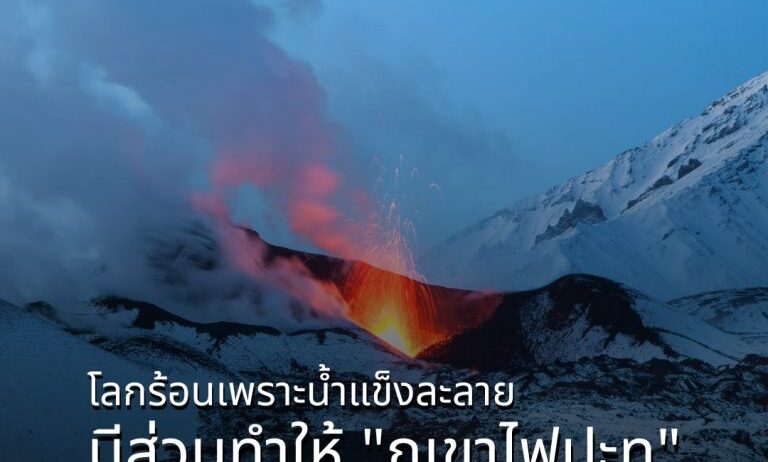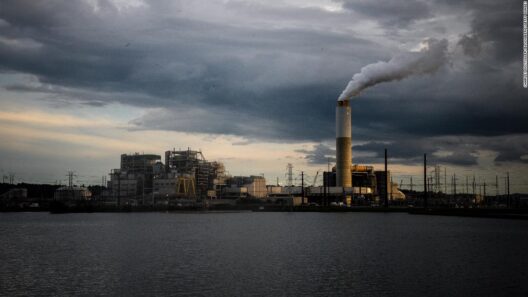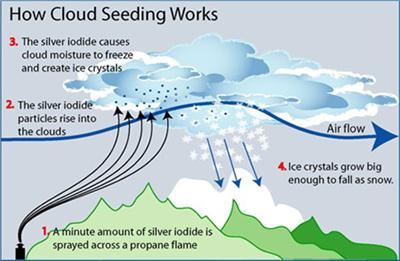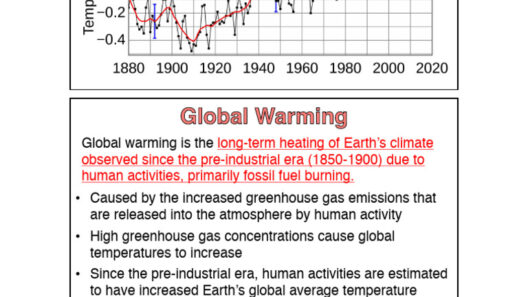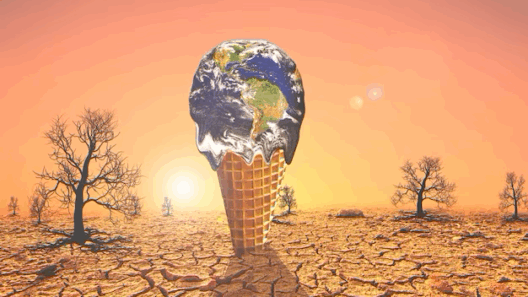The Earth has an inner fire, a fierce maw that at times disrupts the tranquil facade of nature. This volatility manifests itself in volcanic eruptions, events that serve as both a testament to Earth’s fiery core and a potent reminder of the planet’s dynamic climate systems. Historically, these explosive occurrences have drawn attention for their immediate effects on the landscape and human activity. However, a lingering question pervades the discourse surrounding climate change: do volcanic eruptions contribute to a warming world?
To unravel this conundrum, it is essential to discern the intricate relationship between volcanic activity and climate, a bond forged in the crucible of geological processes. Volcanic eruptions primarily emit greenhouse gases—most notably carbon dioxide (CO2) and sulfur dioxide (SO2)—alongside significant quantities of ash and other particulates. In moderation, these emissions can influence global temperatures. Yet, the full extent of their impact demands a closer examination.
When a volcano erupts, it unleashes a torrent of materials into the atmosphere, akin to Earth unleashing its sullen breath. Such expulsion can initially lead to short-term cooling effects, as the sulfur dioxide released can form sulfate aerosols that scatter sunlight away from the Earth’s surface. This phenomenon can obscure the sun and chill the climate, offsetting some of the heat typically retained by greenhouse gases. However, while these eruptions may create a temporary reprieve, they also impart longer-lasting consequences that merit consideration in discussions of global warming.
In the long term, volcanic activity contributes to the greenhouse gas inventory. It is estimated that volcanoes emit approximately 65 to 130 million tons of CO2 each year, a comparatively modest figure when juxtaposed against anthropogenic sources, which add more than 30 billion tons annually. This stark disparity highlights how humanity’s insatiable consumption of fossil fuels eclipses natural emissions, yet it does not diminish the role volcanoes play in the planet’s climatic narrative.
The intricacies of volcanic eruptions extend beyond the gases they release. The heat generated by magma chambers can thaw glaciers, consequently adding more freshwater to the oceans—a phenomenon that invites further complexities into the climate equation. Melting ice contributes not only to rising sea levels but also alters local ecosystems and weather patterns, potentially leading to even more extreme weather events in a warming world.
Moreover, the interactions between volcanic eruptions and human-induced climate change create a feedback loop of potential repercussions. As Earth warms due to anthropogenic activities, permafrost thaws, releasing stored carbon into the atmosphere, which may interact with volcanic emissions in unforeseen ways. This interplay raises concerns for ecosystems already under stress, further complicating the fragile balance of nature.
The fascinating aspect of this debate is the emerging perspective that climate change may, in fact, influence volcanic activity. As the planet’s surface temperature rises, the thawing of ice caps and glaciers reduces the pressure on tectonic plates, potentially leading to increased volcanic eruptions in specific regions. This notion supports a vision of Earth not as a passive witness to climate change but rather as an active participant in its own evolutionary process.
The Pacific Ring of Fire, a theater for some of the most explosive volcanic events on Earth, exemplifies this dynamic tension. The interconnectedness of geological activity and climate is most apparent here: eruptions disrupt local climates, while changing weather patterns influence volcanic behavior. from this perspective, humanity is not merely contending with the effects of climate change; we are also engaged in a tumultuous relationship with geological forces—a dance as old as time itself.
What then should we glean from this intricate interplay of volcanism and climate? While the role of volcanic eruptions in long-term climate change appears to be overshadowed by human activity, dismissing them would be imprudent. These geological events remind us that Earth is a living entity, constantly reshaping and regenerating itself. Consequently, our awareness of volcanic activity must be woven into the broader tapestry of climate discourse.
As we look to the future, it is imperative that humanity embraces an adaptive mindset—one that acknowledges the intertwining narratives of Earth’s fiery breath and our own contributions to a warming world. Understanding the dual roles of volcanoes as both climate influencers and echoes of Earth’s vigorous dynamism empowers us to engage more thoughtfully in climate actions.
Therefore, the metaphorical fiery breath of our planet challenges us to foster resilience. The question of whether volcanic eruptions contribute to a warming world cannot be relegated to a mere footnote in climate conversations. We must illuminate it, infusing our understanding with both respect for the geological phenomena at play and acknowledgment of humanity’s impact.
The path forward resides in integrating different narratives—to appreciate not only the urgency of combating anthropogenic climate change but also to learn from the Earth itself, which embodies the very cycles we are part of. Through careful stewardship of the environment, ongoing education, and active engagement with our planet’s dynamics, we stand poised to address the many facets of climate change, striving to safeguard both natural and human systems in a world characterized by both instability and potential.



